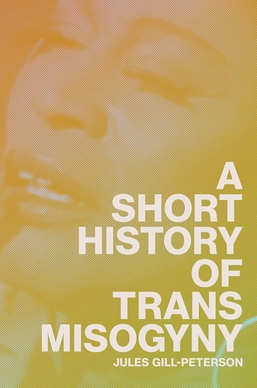Good historical work, mid theorizing
4 stars
Gill-Peterson does an excellent job of displaying the ways in which transfemininity was extant, recognizable and known going back to the 19th century, the way transfem identities/roles/subject positions have been in flux, and the accompanying history of transmisogyny.
I especially appreciate Gill-Peterson's attention to outsiders investment in transfemininity as a symbol/trophy/cultural embodiment to the exclusion of any kind of recognition of transfem agency or interiority.
It's great to see more work being published on transmisogyny, however Gill-Peterson is clearly a stronger historian than a theorist. Meticulously documented historical work is interspaced with unsubstantiated claims. This is especially evident in her coverage of Mary Jones and the second chapter in general and the claim that theur scandal was primarily about race and class, not about them being transfem.
This may be the case, but Peterson fails to ground her claims and to the extent that transmisogyny really is peripheral to these …
Gill-Peterson does an excellent job of displaying the ways in which transfemininity was extant, recognizable and known going back to the 19th century, the way transfem identities/roles/subject positions have been in flux, and the accompanying history of transmisogyny.
I especially appreciate Gill-Peterson's attention to outsiders investment in transfemininity as a symbol/trophy/cultural embodiment to the exclusion of any kind of recognition of transfem agency or interiority.
It's great to see more work being published on transmisogyny, however Gill-Peterson is clearly a stronger historian than a theorist. Meticulously documented historical work is interspaced with unsubstantiated claims. This is especially evident in her coverage of Mary Jones and the second chapter in general and the claim that theur scandal was primarily about race and class, not about them being transfem.
This may be the case, but Peterson fails to ground her claims and to the extent that transmisogyny really is peripheral to these case studies, it's unclear why Gill-Peterson makes them a focal point of her book on transmisogny/how she intents to connect them to her broader narrative.
Her introductory framing that ~we are all affected by transmisogny~ is similarly disappointing. Still, it's a valuable work and Gill-Peterson's attention to nuance around temporally shifting identity/subject positions is excellent.



